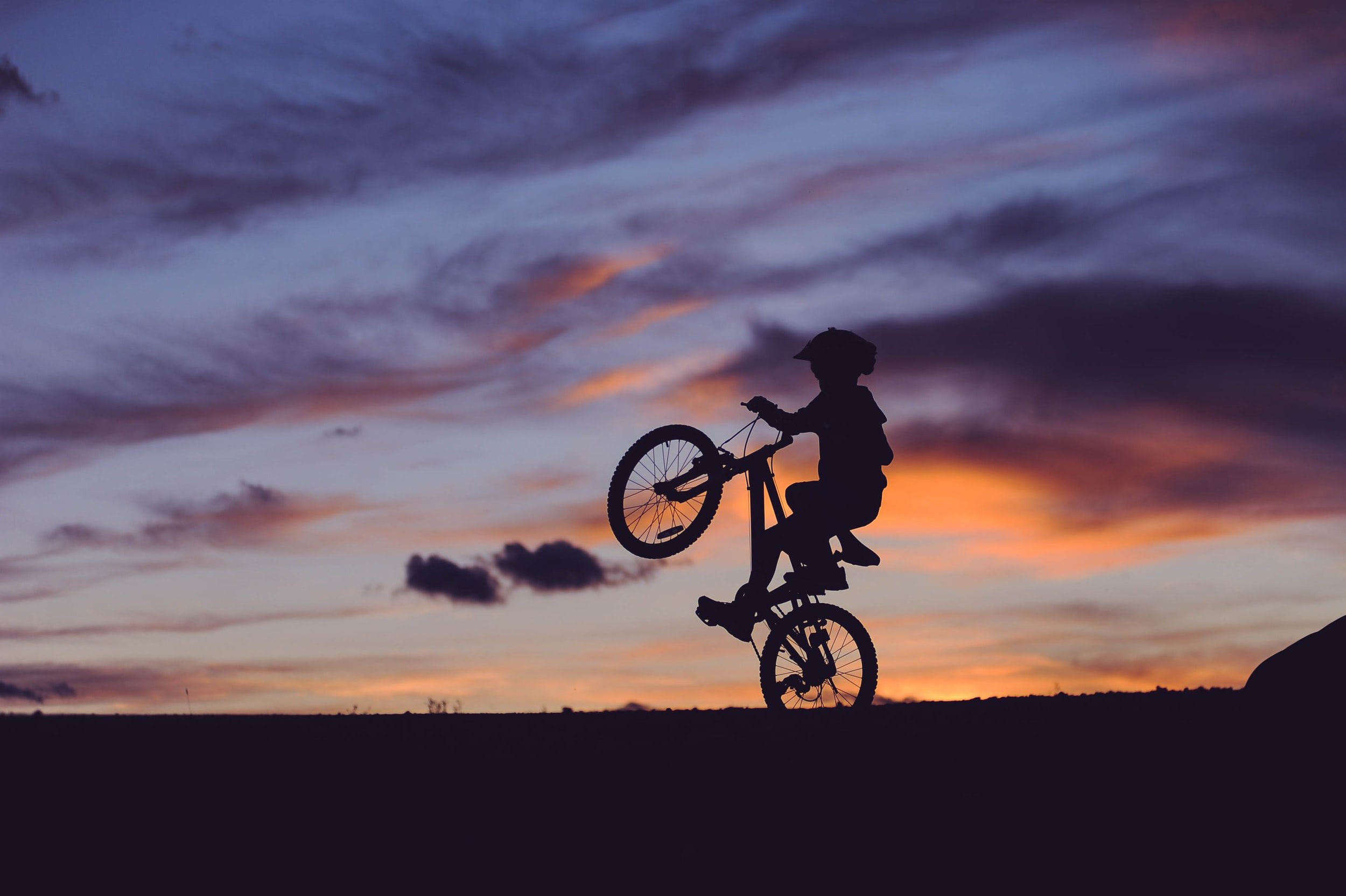Raising ‘can do’ riders in the hills. The bike makes the difference!
When looking for a new bike for yourself or your child the information can get seriously overwhelming, exiting a bike shop can feel much like walking away from the dentist, you may find yourself wondering if you’ve been given way more then you’ve asked for. We’ve tried to make this Bike buying guide as simple as possible, and entry level kind of information but if you ever want to know more, we are always more than happy to give advice.
Size
Firstly, lets talk size. Its far better to go by your child’s height then age, so here is a chart that will get you looking at the right size bike. Children's bikes are classed by the wheel size rather than the frame size.
Weight
The next focus is the weight of the bike, which really comes down to what the frame is made from. This is also where you will start seeing price variation. The lighter the bike frame the easier it is for your child to operate and be comfortable on, therefore enjoy riding. Alloy frames are generally lighter and therefore more expensive than steel frames, they are also less prone to rust. If we’re looking specifically at kids that live in the hills then an alloy frame is definitely worth the investment.
Steel frame bikes do provide the durability to withstand rough treatment but little legs may not have the strength to push these bikes uphill without large amounts of effort. Here is one of the biggest differences you’ll find between a Kmart bike and a reputable bike shop, the other being who has put them together.
Gears or No Gears? That is the question!
This is only a decision to contemplate once your child is ready for a 20” bike. One of the easiest ways to know if you need a geared bike or not is by the type of riding your child will predominantly be doing. If riding to school, lengthy street rides with mates, and on family adventures is the majority of their riding then gears, and therefore, a mountain bike it is for you. If skate parks, pump tracks and mostly hill-less street riding is the go then gears aren’t a priority and therefore a BMX may be more the style you’re after. Of course, both these styles can be ridden in any environment but its important to look at the bikes main purpose to determine the best style overall.
Brakes
Hand, Coaster (AKA pedal or foot brakes), Disc or Rim… who knew there was so many ways to stop? Now this can all get quite technical and confusing so this is ground level information.
At some point in your child’s riding life they are going to need to start using hand brakes, unless a specially modified bikes is required. It is Australian standard that all children’s bikes with a wheelbase of between 640 – 765cm (distance from centre rear wheel to centre front wheel) have coaster (or foot) brakes. This generally translates to bikes up to 16” – 20”, so from this point onward the skill of braking by hand is necessary. What this means is the earlier a child is familiar with braking by hand the smoother the transition will be. So, with this in mind a child’s bike that incorporates hand breaks along with its foot brake is a great advantage. Nearly all children’s bikes will have rim brakes (these are the brakes that squeeze the wheel rim to stop). The alternative is disc brakes which we will put in the same category as front suspension, neither are a ‘must have’. Both these (disc brakes and front suspension) definitely have their place for more confident and adventurous riders but, they will increase the bikes price range.
Speaking of price range …. The big question:
What’s a Reasonable Amount to Spend?
So reasonable is the big word here. There is a reason you won’t be able to find the under $250 kmart prices in your local bike shop. Be mindful of the frame weight information given above and who’s putting your bike together. The OTT metal parts and random springs incorporated in to a bike does not equate to quality.
Everything that is on your bike should serve its purpose or its just added weight that’s not needed.
The above sentence also goes for being over sold on top end bikes. Your 10-year-old that enjoys a ride with friends and some fun down at the skate park does not need a bike over $1000. If you are able to budget in the ball park of $450 to $800 you will leave with a bike that has been built with your child’s safety in mind and will last through several generations of children when properly cared for.
*Information provided is to be used as a guide only and can vary between bike brands. Prices subject to change over time.
This article was kindly written by the amazing team at Cog Bikes Australia. You can find out more about them in our business directory.




